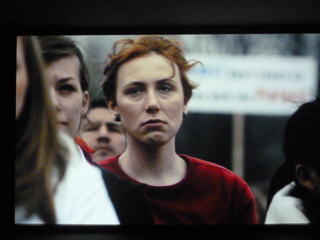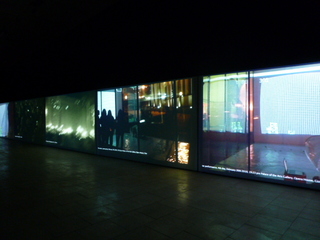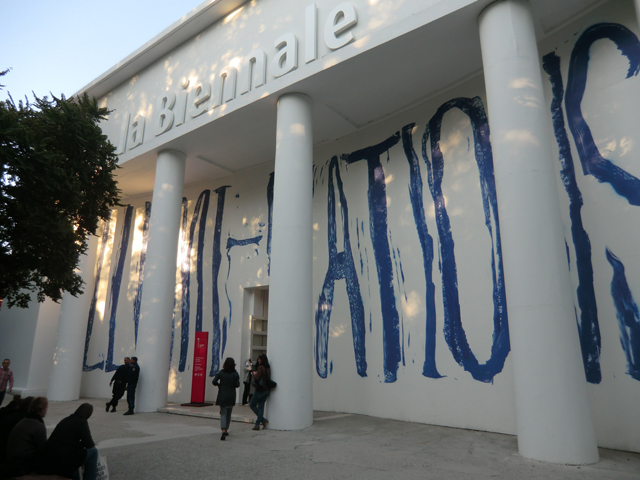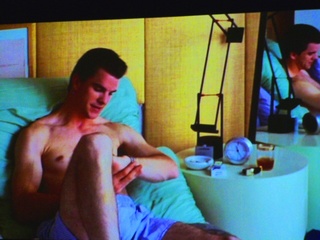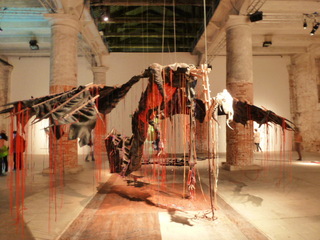54TH VENICE BIENNALE
HAPPENINGText: Toshiaki Hozumi
The worldwide “54th Venice Biennale” art exhibition, known as “La Biennale,” took place from June 4th to November 27th, 2011
This Biennale had the largest ever number of exhibitors with a total of 89 countries participating. This biennale represented the world more than any other to this day.
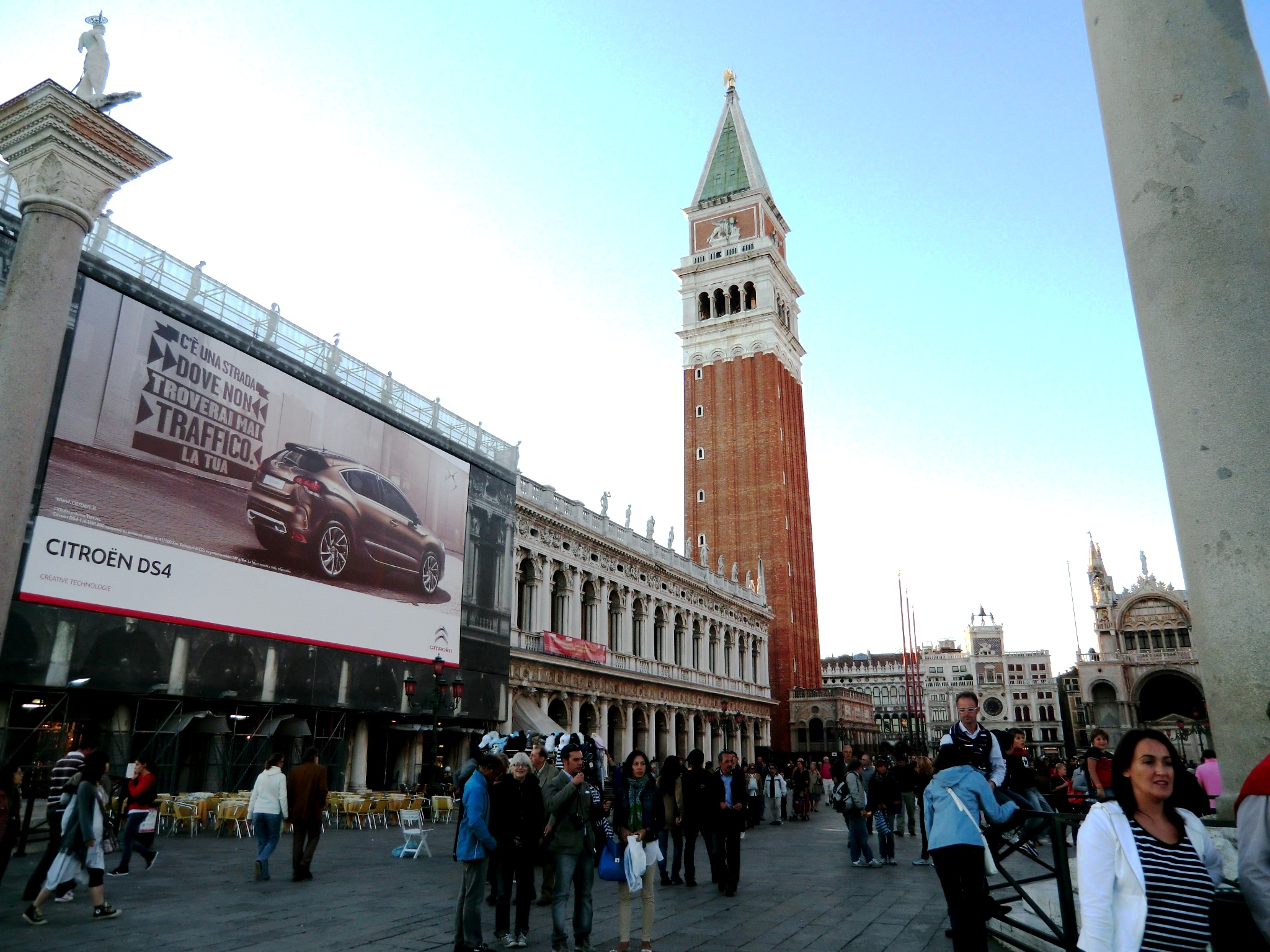
One could say the discussion of whether country=nation was the hottest topic being discussed.
The various possibilities of Globalism being discussed at the present time, has made it clear that Americanization around the world spreads capitalism. The question now is, “How should we face the society and the culture”? We need to find the answer without nationalism.
One could say that each national pavilion fights hard to artistically address these modern themes.
Since the opening of the Aperto exhibition in 1980, newcomers who exhibited their new ideas, have given fresh impressions. In contrast, each national pavilion gave a retrospective impressions that settled down. However this year’s exhibition went in the opposite direction. “Must see” works were rather few and each national pavilion was unusually enthusiastic.
Greece Pavilion (Diohandi)
That might be succeeded by Bice Curiger (art historian Swiss)’s project, who is a synthesis director. The theme of this year was “ILLUMInazioni/ILLUMInation”. Those meanings of ”light”, ”lighting” and ”enlightenment” is exactly connoted in the term “nation”.
When planning the project of biennale, Bice Curiger wanted to show that a field of art has possibility to cultivate new aspects of society or public opinions and the reconstruction of the “nation” is coming into the foreground. One big difference between the Venice Biennale and other national exhibition is that the Biennale di Venezia has the classification of the “world of nations.” Taking advantage of that will surely be the lifeline of this national exhibition.
Each nation not only pick’s its country’s leading artist, but also elects the artist who is good at expressing each nation’s feature or project strongly.
Incorporating the lives of postwar Japan into the work, Japan exhibited Tereko soup, A coinage that combines the words of Abekobe(means “contrary”) with Tele-scope, by Tabaimo. From this work, we can feel the depth of original Japanese Anime culture. Making use of the structure of the building, this work utilized surface screens and mirrors, fitting closely into each corner. As a result, this work got shared a strange and fantastic sense of wonderment, like viewing kaleidoscopes. Tereko soup attracted a lot of spectators.

America Pavilion (Jennifer Allora & Guillermo Caizadilla)
An American exhibition especially came through with the most humorous method of adopting the issues of country. Jennifer Alora and Guillermo Calzadilla titled their work “Glaria” means glory and known as a name for woman. Their plot works that the glories of America, i.e. armament, economic power, sports, globalism, religion and democracy, was humorously disjointed.
A performance treadmill was set onto a fallen caterpillar of tank and an Olympic athlete ran on that set up. A Statue of Liberty, which lay down on the suntan machine was blackened like an African American. A performance showed a beautiful gym-like balance beam on the business class seat that is made by wood and so on. And also there’s a work that is able to play music when spectators use the device connected to solemn pipe organ on an ATM. Anyway, it looks like these works ridicule at showing this take on the majestic of America.

German Pavilion (Christoph Schilingensief)
It was the German exhibition that won the first prize, tiny lion prize of golden, for nation classified pavilion. Basing faithfully on the design of stage devices for a drama made by Graphic artist “Christoph Schlingensief” who died, after elected to Biennale representative last year, they made up a large-scale installation that imitated a church inside of the work. This graphic artist who had cult popularity, had completed a heretical church perfectly from a solemn German building, reminding me of the Nazis age. The title is “The church of terror VS Monster in my mind”. Which is the terror or monster: Nazis or the cult?
At the United Kingdom’s exhibition, a long line of people were waiting to enter, Mike Nelson evoked a caravansary of Istanbul in the 17th century, symbolic of east-west trade, such as maze. That was associated with the inhabitants or history of this caravansary eerily by tools and pictures. It also could be a symbol of continued trade or conflict all over the world in the former British Empire.
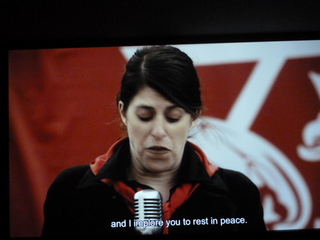
Poland Pavilion (Yael Bartana)
Poland’s and Egypt’s exhibitions focused on the great issue of the country’s condition and express most directly. Poland elected Yael Bertana from Israel as a representative. He made a fictional narrative of the Jewish Renaissance Movement in Poland, JRMiP, in 3 volumes that call on exiled Jews to return to Poland. This kind of political work, as either art or propaganda, was made in 90’s a lot, but this work is more realistic and shocking with a sense of urgency. I’m really impressed with an attitude of Poland to elect this kind of artist as a representative who’s from Amsterdam.

Egypt Pavilion (Ahmid Basiouny)
Egypt elected Ahmed Basiony, who died in “Anger Friday” of January 2011. At Egypt’s exhibition, Ahmed’s performance video, runs in the gallery for 30 days, have been taken just before his death during the demonstration, plays at 6 screens by curation from artists. It was a shocking for me because this affair has happened just before.
Thus the works showed domestic issues directory are presented in each nation’s pavilion. That is a characteristic and impressive part of Venice Biennale of this year.
On the other hand, how the official project exhibition that took place in a center exhibition which was the place of Italy exhibition before in Giardini Park, and in Arsenale, the massive hall in a used place of dockyard.
Bice Curiger would like to show the theme “Light” on the art history, he exhibited 3 pictures by “Light” artist Tintoretto in the 16th century, at first in this exhibition.
There are arguments both for and against in the prolog because some people consider displaying a Tintoretto one way to the exhibition and other people consider exhibiting Tintoretto was too much and looks like out of place.
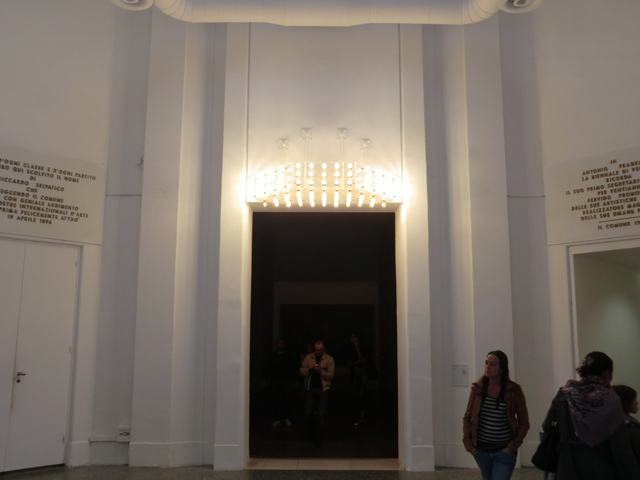



Entrance to Main Pavilion, Haroon Mirza, Monica Bonvicini, James Terrell
As if directed by Tintoretto, Martin Creed, Pipilotti Rist, James Turrell, Haroon Mirza: Silver Lion prize recipient, Monica Bonvicini, etc, total: 83 artists present in the exhibition.。
A work that became a topic of discussion was the huge sculpture made of wax by Urs Fischer. The characteristic of this work is the life-size sculpture of Rudolf Stingel, friend of Giambologna who’s an artist, along with a detailed replica of “The Rape of the Sabine Women” by Giambologna, an engraver lived in the 16th century. Fire was injected in gradually breaking the piece down as it melted in sessions. Feeling cynical humors, I felt that work is contemporary a structure which destroys itself by the light of fire looked like an allegory of immunodeficiency.
Christian Marclay’s art work “a Clock”, a Golden Lion prize recipient, was also displayed in the Yokohama triennale. This work is really elaborate; combined many scenes about clock or time from every movies. And also it was made the time is same as the real time and it was edited as a consecutive video. When I thought the clock lost 5 minutes, in another moment there was a message “That time is 5 munities slow”. We can find the vague humor and life scenes there. With it is difficult to distinguish actual time from the time in the movie, demonstrating that people are living in a story. That work is exactly educated by the movie, Lemiel.
I think it is “The Jump”, the Film video by Jack Goldstein displayed nearby to Tintoretto that most reflected the “ILLMInation” theme. A jumping video was quoted from the documentary film “Olympia”, showing an imposing appearance of the Nazis to all over the world that is filmed by Leni Riefenstahl. I felt it is not only that the Light of education in a Nation, but also it focused on the part of darkness and light up to the ground of Europe, Venezia to small brightness.

左から、Song Dong、Monika Sosnowska
At this exhibition, para-pavilion was displayed partly in order to cooperate with nations exhibition. Son don, Monika Sosnowska, Franz created a pavilion, and exhibited works of other artist there. There are arguments both for and against this try.
Furthermore, in this official exhibition, a lot of young and female artists presented but I think European and American artists were extremely fewer. This was also the subject of the pros and cons. There are arguments both the opinion “They prudently work up the exhibition within the range they could do” and “They couldn’t think of globalism although it is the peak of it”. As for a writer, I disappointed there was no Japanese artist. However, forgetting about globalism, I could understand to some extent the intention of Kreger, to review prudently one’s own things in detail.
Creating a lot of argument at the Venice Biennale contained the theme “Post globalism,” that express a new social cooperation, in every challenges. How much is there possibility for communication based on “Nation” beyond Globalism. Of course some specific nation or group will avoid a spectacular expressions and they will express detailed expressions that demands of personal support.
Anyway, although Venice Biennale was criticized as “Not worth watching” caused by the styled Post-globalism and Post-spectacle, it surely reflected the generation this year.
54th Venice Biennale
Date: June 4th – October 31st, 2011
Place: Venice Giardini, Arsenale, etc.
https://www.labiennale.org
Text: Toshiaki Hozumi
Translation: Yuta Sakuraba, Satsuki Miyanishi








